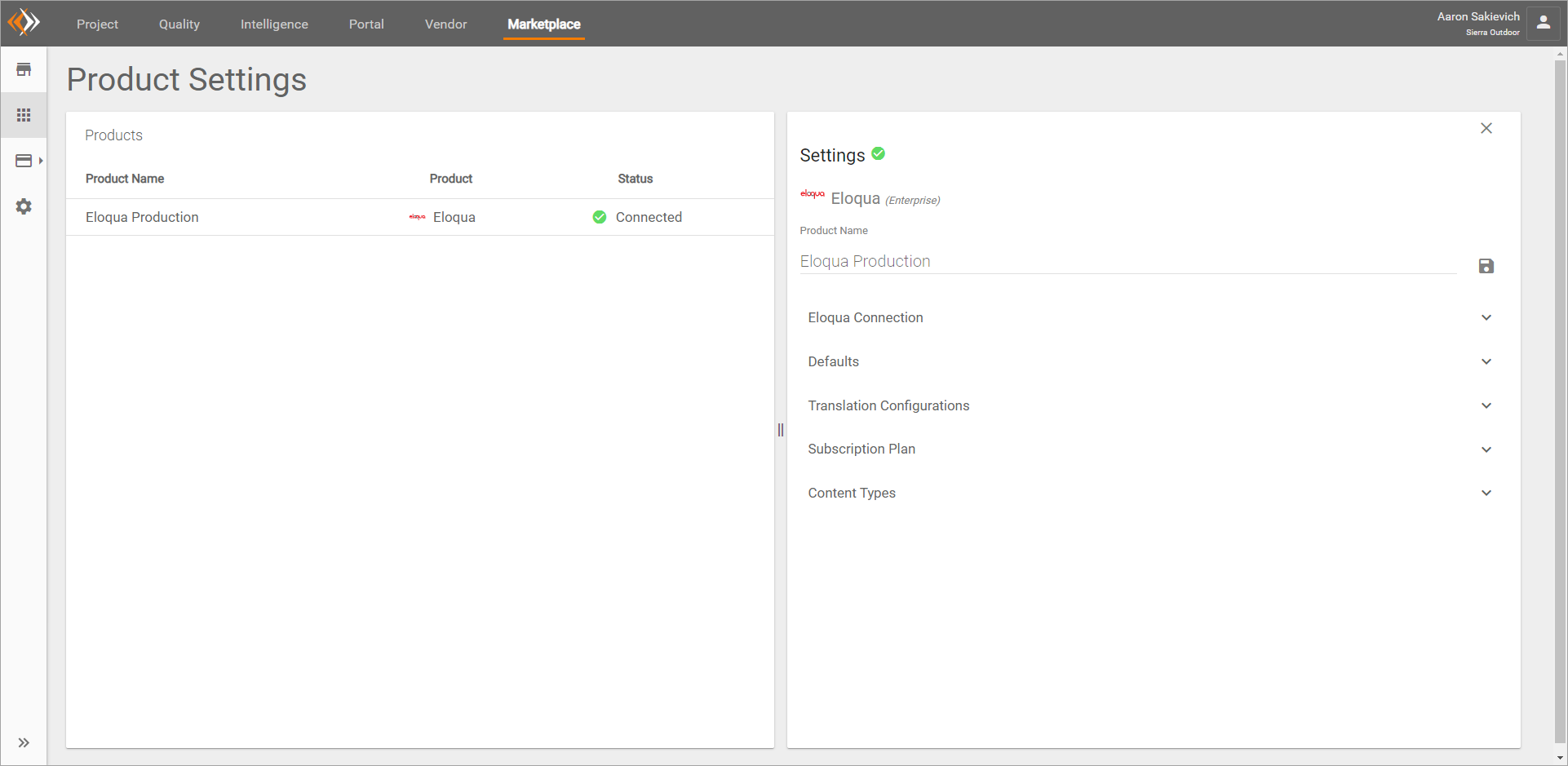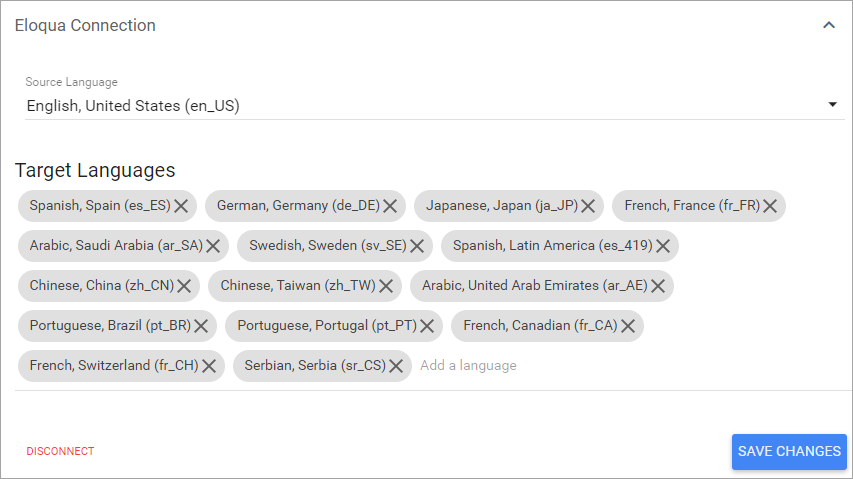Versions Compared
Key
- This line was added.
- This line was removed.
- Formatting was changed.
In Eloqua
Before you begin installing Eloqua you will need:
An Eloqua Oracle account.
A user in Eloqua who has permission to create, delete, and edit all content types. It is recommended that this be a pseudo-user, not an individual as you may need to change an individual's permissions if there are personal/process changes. This will not prevent other Eloqua users from using the Chrome extension if they are logged into your Eloqua account.
Be logged into your Eloqua account as that user.
The RAY Enterprise Marketplace application. To receive this application, reach out to support@lingotek.com.
An enterprise Eloqua subscription enabled in RAY Enterprise’s Marketplace application. To receive this subscription, reach out to support@lingotek.com.
In
RAYEnterprise’s Marketplace app
Making the connection
Ensure that you are logged into Eloqua as the user that has the correct permissions.
Login to https://marketplace.lingotek.com.
Go to the Products menu. There you will see a table of all of your integrations with RAY Enterprise.
You will see a row for Eloqua, and you will notice under the status column it says "Disconnected."
 Image Removed
Image Removed Image Added
Image AddedClick on the row for Eloqua.
A separate tab will open and Oracle Eloqua will ask you to sign in to give RAY Enterprise Marketplace permission to access Eloqua on your behalf. If you are already signed in, you will simply select the sign-in button and it will load a new page.
 Image Removed
Image Removed Image Added
Image AddedOn the new page you will see who you are logged in as. Select Accept if you are signed in as the correct user.
 Image Removed
Image Removed Image Added
Image AddedYou will then be free to configure Eloqua in Marketplace.
Configure Eloqua Settings
Log into Marketplace and go to the Products menu.
Select the newly connected Eloqua integration.
 Image Removed
Image Removed Image Added
Image AddedSelect the pencil icon to give the product a name, then select the save icon. This is helpful and recommended if you have multiple instances of Eloqua that need an integration.

Expand Eloqua Connection and select your source and target languages. Select Save Changes.
 Image Removed
Image Removed Image Added
Image AddedLock Targets in "Current" Status - Targets that reach the current status will be locked, preventing them from receiving any further updates from the TMS. This can be manually changed in the RAY Enterprise Inside connector. This setting is global for all Translation Profiles.
Translation Profiles
Expand the Translation Profiles section. The automatic and manual profiles have already been created for you. To create a new profile you can select the plus next to the Add Profile header or you can simply modify the automatic and manual profiles.
| Info |
|---|
The automatic and manual profiles are distinguished by the setting to automatically or manually download completed translations. |
Give the Profile a name to help your content managers distinguish the profile.
Choose the targets that should be used with this translation profile. This allows you to prevent some languages from being used for specific content types.
Download - Choose if you want your content to download automatically or manually when they complete the translation process. This setting cannot be adjusted for the automatic and manual profiles.
Auto-Upload Settings – Choose to automatically upload untracked content at a regular interval.
Project - Use the dropdown to select which project in the RAY Enterprise TMS the Eloqua content should be uploaded into.
Workflow - Use the dropdown to select which workflow should be used to translate your Eloqua content.
Primary Filter - The FPRM filter that should be initially applied to your content
Secondary Filter - the FPRM filter should be applied to your content after the Primary filter. It is highly recommended that you use the Eloqua Default filters that are already selected in this drop-down. If your content needs special filters, please speak with support@lingotek.com.
Document Metadata - Populating any of these fields will add that value to the corresponding metadata field in RAY Enterprise upon upload.
Select Save Changes.
Assign content types to profiles - You can translate content types differently by assigning them to different profiles. For example, you may want once content type to get high-quality translation, and others, simple machine translation. All your content types are assigned to the Automatic profile by default, but you can remove them from the automatic profile and move them to other profiles. If you do not want a content type to receive translation, then do not assign it to a profile, and your content managers will not be able to upload it to the TMS.
User Manager
Open the User Manager panel. Use this panel to choose which of your community members should be able to use this integration to upload content from your connector. Simply add/remove users as necessary. Please note that you can only add users who have access to the Marketplace application.
On this page:
| Table of Contents |
|---|